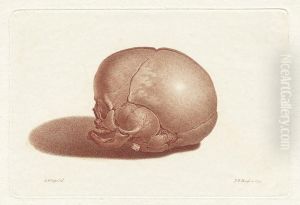Johann Friedrich Bause Paintings
Johann Friedrich Bause was a German engraver, born on November 20, 1738, in Halle, Saxony-Anhalt. He is best known for his portrait engravings which were highly regarded during his lifetime. Bause was trained in the art of engraving at an early age and developed his skills to a high degree of precision, becoming one of the most sought-after engravers of his time.
Initially, Bause was taught by his father, who was also an engraver. Later, he became a pupil of Johann Martin Bernigeroth in Leipzig, where he further honed his craft. His early work was influenced by the rococo style, which was prevalent at the time, but he later developed his distinctive style characterized by clarity and fine detail.
Bause's engravings were often based on the works of other artists, and he collaborated with notable painters of his era, interpreting their paintings into engravings. His subjects included prominent figures from various spheres, including royalty, statesmen, and intellectuals, which made his work popular among collectors and the art-loving public. His engravings not only served as a means of documenting the visages of the elite but also helped to disseminate the works of contemporary painters to a broader audience.
In addition to portraits, Bause also created book illustrations and genre scenes. He had an extensive career and produced a significant body of work that contributed to the proliferation of visual culture in Germany and beyond during the 18th and early 19th centuries.
Johann Friedrich Bause died on July 5, 1814, in Leipzig. His legacy is preserved in the collections of various museums and galleries, with his engravings still appreciated for their technical skill and historical value. Although not as widely known today as some of his contemporaries, Bause remains an important figure in the history of German engraving.
